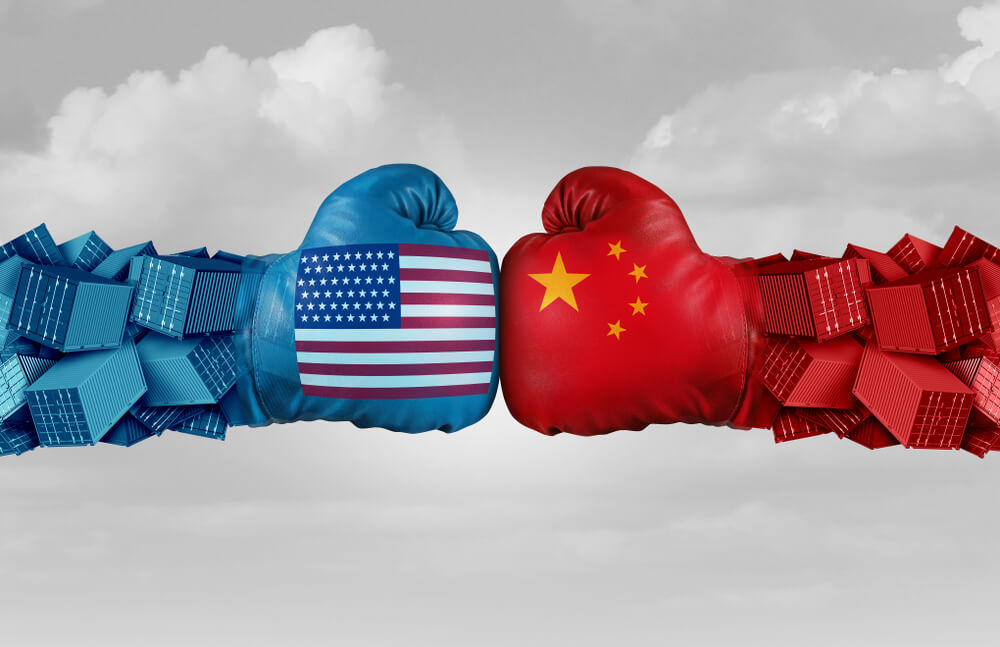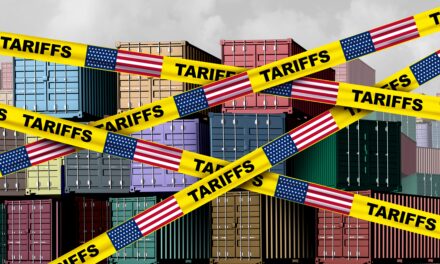The Trump administration and China declared a temporary truce Friday in their 15-month trade war. Yet the grievances that led them to impose tariffs on hundreds of billions of dollars of each other’s goods remain largely unresolved.
The administration agreed to suspend a tariff hike on $250 billion worth of Chinese imports that was set to take effect Tuesday. And China agreed to buy up to $50 billion in U.S. farm products.
The de-escalation in tension between the world’s two largest economies was welcomed by financial markets. The U.S.-China hostilities have alarmed investors and escalated costs and uncertainties for many businesses.
President Donald Trump announced the cease-fire in a White House meeting with the top Chinese negotiator, Vice Premier Liu He. The news followed two days of talks in Washington, the 13th round of negotiations between the two countries’ delegations.
“It took us a long time to get here, but it’s something that’s going to be great for China and great for the USA,” Trump said.
Many of the details, though, remained to be worked out. And some of the thorniest issues — such as U.S. allegations that China forces foreign companies to hand over trade secrets — were dealt with only partially, or not at all, and will require further talks.
“The president is acting as if a lot of Chinese concessions have been nailed down, and they just haven’t,” said Derek Scissors, a China specialist at the conservative American Enterprise Institute.
The negotiators have so far reached their tentative agreement only in principle. No documents have been signed.
And the threat of escalation still hangs over the two countries: Trump has yet to drop plans to impose tariffs that are set to take effect Dec. 15 on an additional $160 billion in Chinese products — a move that would extend the sanctions to just about everything China ships to the United States.
While providing scant details of what was agreed to Friday, the White House said Beijing pledged to be more transparent about how it sets the value of its currency, the yuan. The administration has long accused China of manipulating the yuan lower to give its exporters a competitive edge in foreign markets.
China has also agreed to open its markets to U.S. banks and other financial services providers, Treasury Secretary Steven Mnuchin said.
The trade war has inflicted an economic toll on both countries. U.S. manufacturers have been deeply hurt by rising costs from the tariffs and by uncertainty over when and how the trade hostilities may end. Friday’s truce at least opens the door to progress.
“They’re trying to de-escalate,” said Timothy Keeler, a former chief of staff at the Office of the U.S. Trade Representatives. “I think it serves both sides’ interests because both sides were feeling pain.”
Stock prices had been up substantially Friday, mainly in anticipation of a significant trade agreement. But once the White House announced the contours of the tentative accord, the market shed some of its gains. The Dow Jones industrial average, which had risen more than 500 points at its high, closed up 319.
“This is an encouraging first phase,” said Craig Allen, president of the U.S.-China Business Council. “We await word on how implementation will be measured and in what timeframe, as well as details on scheduling subsequent phases.”
The U.S. and Chinese negotiators didn’t deal this week with a major dispute over the Chinese telecommunications giant Huawei. The U.S. has imposed sanctions on Huawei, saying it poses a threat to national security because its equipment can be used for espionage. Trump has said he was willing to use Huawei as a bargaining chip in the trade talks.
The administration still has in place tariffs on more than $360 billion worth of Chinese imports. What changed Friday was that Trump suspended plans to raise existing tariffs on $250 billion in Chinese products from 25% to 30% next week.
Beijing has lashed back by taxing about $120 billion in U.S. goods, focusing on soybeans and other agricultural products in a shot at Trump supporters in rural America.
Last year, U.S. farm exports to China plummeted 53% to less than $9.2 billion. The additional Chinese purchases that were promised Friday could provide an economic boost to hard-hit U.S. farmers. Mnuchin said the $40 billion to $50 billion in agricultural sales cited by Trump is an annual amount that would be ramped up to “within the second year” of the agreement.
The two sides were close to a more comprehensive deal in early May. But talks stalled after the administration accused China of reneging on earlier commitments. Trump acknowledged that Friday’s deal has yet to be put down on paper but said that wouldn’t be a problem.
“China wants it badly, and we want it also,” the president said. “We should be able to get that done over the next four weeks.”
Myron Brilliant, executive vice president of the U.S. Chamber of Commerce, drew encouragement from Friday’s developments.
“Finally, a ray of hope for the U.S.-China trade relationship,” he said. “While there remains significant work ahead to address many of the most important U.S. trade and investment priorities, we will continue to lend our full support.”
Still, Gregory Daco, an economist at Oxford Economics, suggested that the partial nature of the deal won’t relieve much of the uncertainty surrounding trade policy that has discouraged many American companies from investing in new equipment and expanding.
“For businesses this will mean less damage, not greater certainty … “Beyond the promises and niceties, the deal doesn’t address key underlying issues,” Daco said in a research note.
The two countries are deadlocked primarily over the Trump administration’s assertions that China deploys predatory tactics — including outright theft — in a sharp-elbowed drive to become the global leader in robotics, self-driving cars and other advanced technology.
Beijing has been reluctant to make the kind of substantive policy reforms that would satisfy the administration. Doing so would likely require scaling back China’s aspirations for technological supremacy, which it sees as crucial to its prosperity.
© The Associated Press. All rights reserved.




